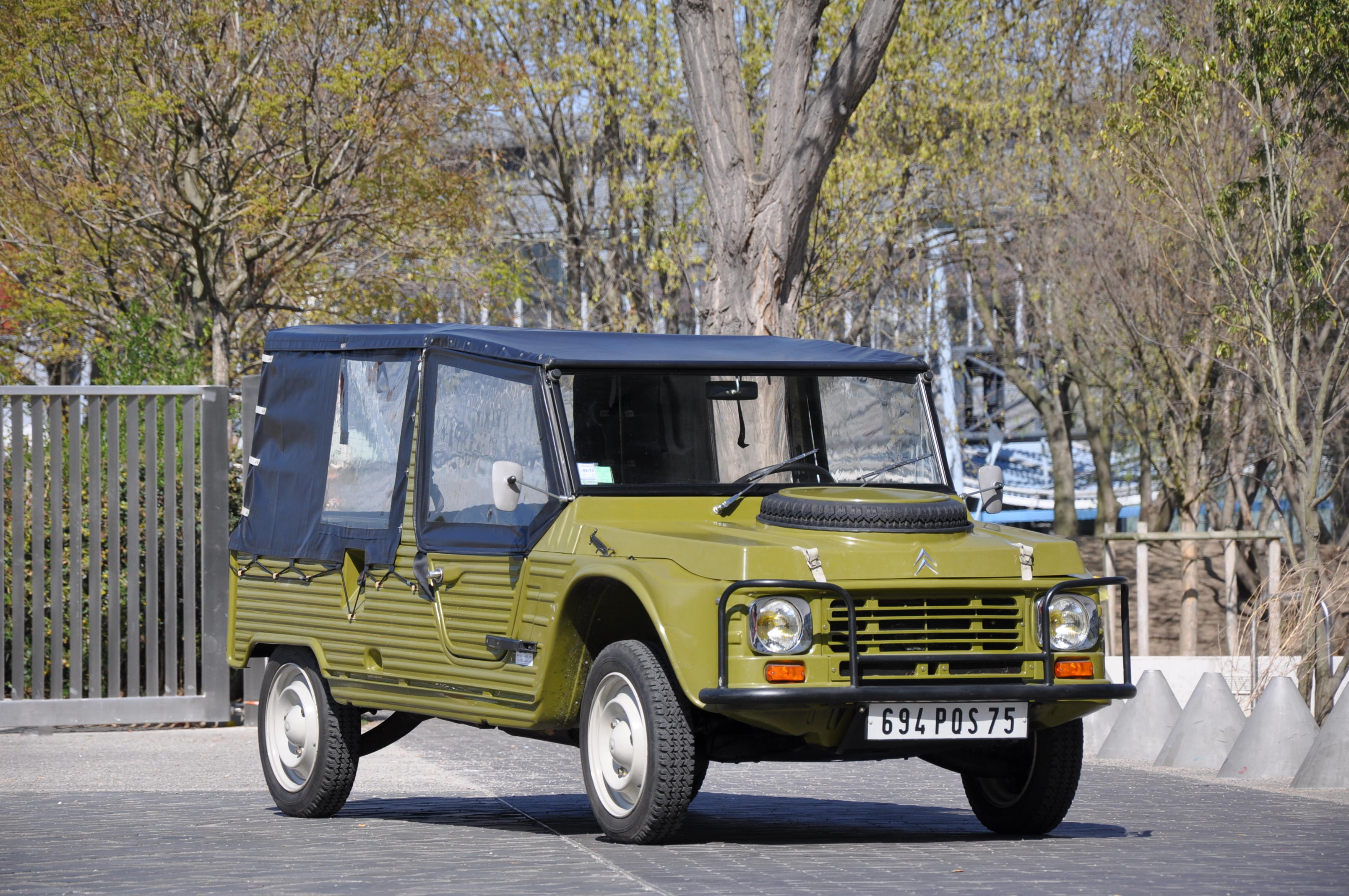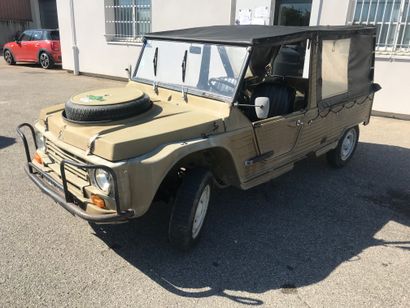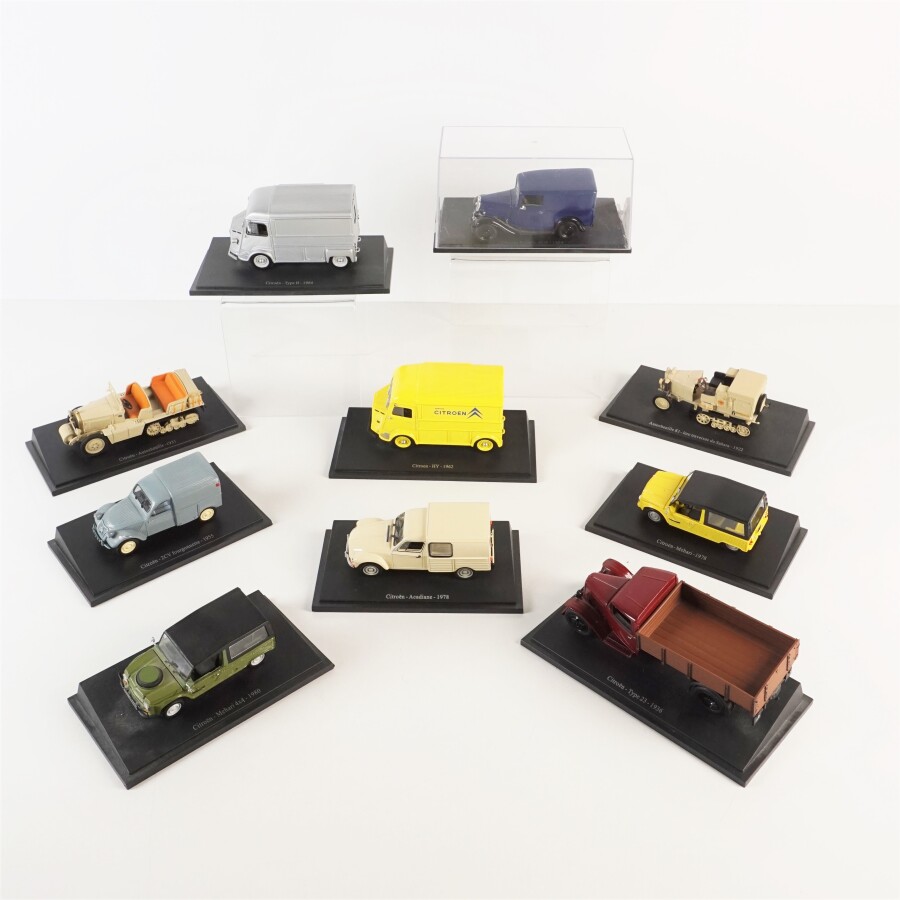Almost certainly inspired by BMC's Mini Moke, the Citroën Méhari first appeared in prototype form in 1967 and like its British counterpart was based on a standard production car. In the Citroën's case it was the Dyane 6 version of the inimitable 2CV so the Méhari featured the latter's torsion-bar suspension and air-cooled 602cc twin-cylinder engine driving the front wheels. The open body was made of ABS plastic and, like the Moke, a detachable soft-top and side screens served as weather protection. Taking its name from a type of Camel known for its speed, the Méhari was launched at the Paris Auto Show in October 1968 and would remain in the range for the next 20 years, only disappearing when 2CV production ceased in France in 1988, by which time a total of 144,953 had been made. Of these, only some 1,200 or so were the four-wheel drive version like that offered here. Citroën had first applied four-wheel drive to the 2CV back in the mid-1950s with the 'Sahara' model, which used a second engine driving the rear wheels independently. Produced from 1980 to 1983, the 4x4 Méhari used the front engine and conventional four-wheel-drive transmission. Most were sold to the French Army and civilian models, like this one, are rare. By all accounts the Méhari 4x4's generous ground clearance, long-travel suspension, low weight and all-wheel drive made for a most competent off-roader. Some independent specialists have fitted the 2CV body to the Méhari 4x4 chassis to create a conventional four-wheel drive saloon. Supplied new in France, this rare Méhari 4x4 was imported from Germany into Italy in 1995, moving to France in 2012 and thence to Belgium in November of that year. A very nicely restored example, the vehicle is offered with copy service notice, Italian and French registration papers, and Belgian importation Form 705.
Almost certainly inspired by BMC's Mini Moke, the Citroën Méhari first appeared in prototype form in 1967 and like its British counterpart was based on a standard production car. In the Citroën's case it was the Dyane 6 version of the inimitable 2CV so the Méhari featured the latter's torsion-bar suspension and air-cooled 602cc twin-cylinder engine driving the front wheels. The open body was made of ABS plastic and, like the Moke, a detachable soft-top and side screens served as weather protection. Taking its name from a type of Camel known for its speed, the Méhari was launched at the Paris Auto Show in October 1968 and would remain in the range for the next 20 years, only disappearing when 2CV production ceased in France in 1988, by which time a total of 144,953 had been made. Of these, only some 1,200 or so were the four-wheel drive version like that offered here. Citroën had first applied four-wheel drive to the 2CV back in the mid-1950s with the 'Sahara' model, which used a second engine driving the rear wheels independently. Produced from 1980 to 1983, the 4x4 Méhari used the front engine and conventional four-wheel-drive transmission. Most were sold to the French Army and civilian models, like this one, are rare. By all accounts the Méhari 4x4's generous ground clearance, long-travel suspension, low weight and all-wheel drive made for a most competent off-roader. Some independent specialists have fitted the 2CV body to the Méhari 4x4 chassis to create a conventional four-wheel drive saloon. Supplied new in France, this rare Méhari 4x4 was imported from Germany into Italy in 1995, moving to France in 2012 and thence to Belgium in November of that year. A very nicely restored example, the vehicle is offered with copy service notice, Italian and French registration papers, and Belgian importation Form 705.















Testen Sie LotSearch und seine Premium-Features 7 Tage - ohne Kosten!
Lassen Sie sich automatisch über neue Objekte in kommenden Auktionen benachrichtigen.
Suchauftrag anlegen